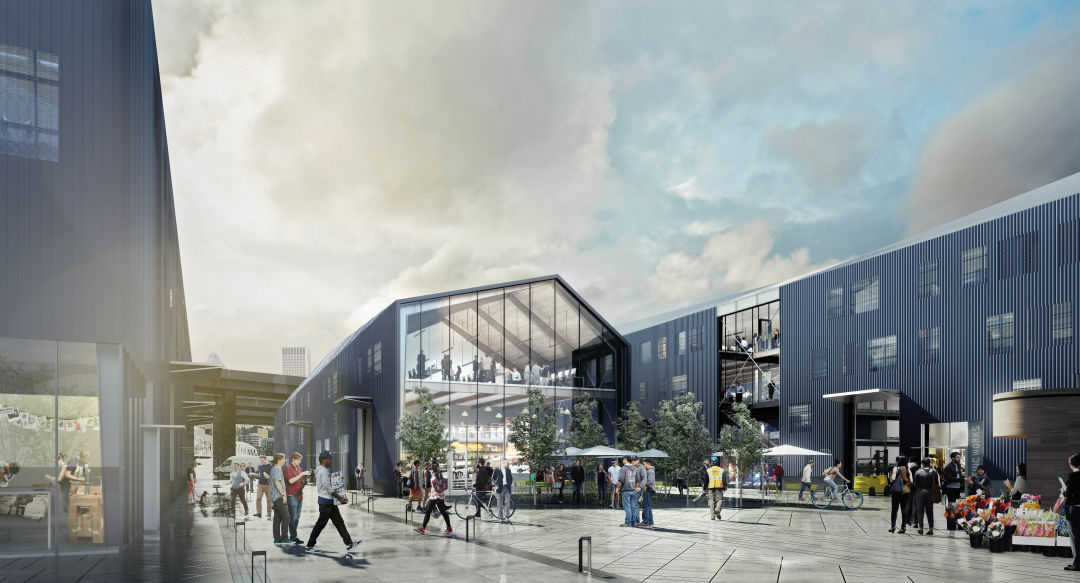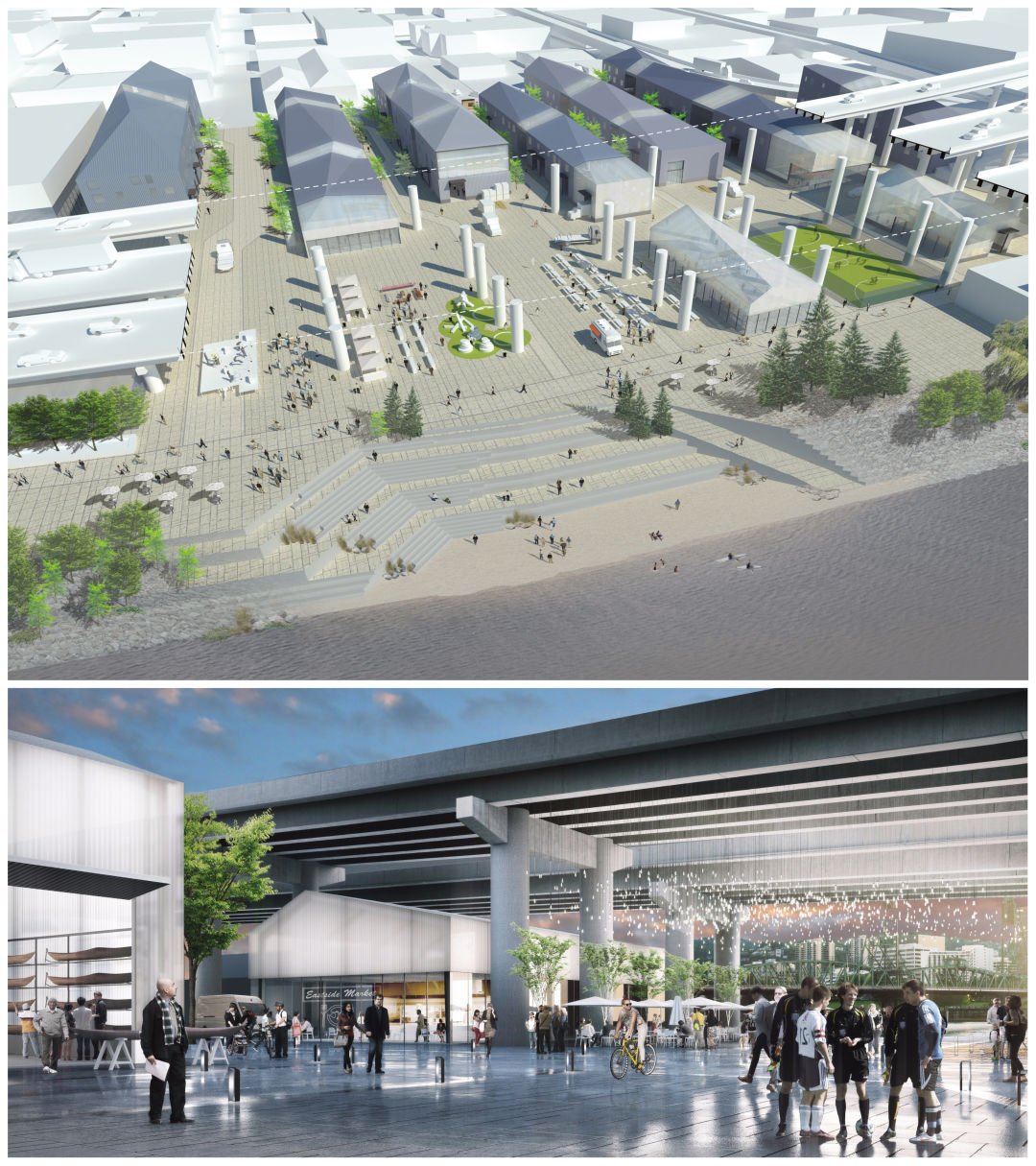Could This Cruddy Swatch of Concrete Become a Riverside Paradise?

Image: Courtesy Bora Architects
A perfect slice of Portland waterfront is an undeveloped, decaying no-man’s-land. Beneath I-5’s thunderous east-side overpass just off of SE Water Avenue lies a six-acre, trash-riddled stretch of graffitied cement and empty parking lots. Recent news that Prosper Portland (née the Portland Development Commission) purchased part of the lot might not change much. (The Oregon Department of Transportation still owns the section under the freeway.) The city urban-renewal agency will request proposals from developers to design light manufacturing and creative office space—most likely keeping the area cut off from public use.
Michael Tingley has other ideas.
“It doesn’t feel like there’s much thought being put into creating community spaces,” says Tingley, a principal at Bora Architects who’s designed spaces for Airbnb, Oregon State, and Dartmouth.
The architect’s vision for this site—regardless of what eventually gets built there: a public playground dubbed “Water Avenue Yards.” Inspired by buzzy riverbanks in New York and Paris, as well as downtown’s Director Park, Tingley and his colleagues at Bora took it upon themselves to design a utopian, multiuse plaza dotted with food stalls, a beer garden, and a futsal court. Beneath the freeway, seating allows for staging outdoor movies, with a screen hung between the highway’s towering columns. Along the Eastbank Esplanade’s ribboning path, a bike repair shop and coffee stand lure cyclists. And a new tiered beach returns river access to the Central Eastside: 250 blissfully sandy feet of waterfront facing the downtown skyline.

Will this vision ever go beyond the blueprints? Tingley, who estimates the firm has spent three years, off and on, refining the idea, says he hopes Bora will have the chance to consult with the eventual developer. He points to Toronto, where a dodgy walk beneath an overpass became futuristic playgrounds with artistic nighttime lighting displays. For him, the direction Portland ultimately takes will reveal the city’s true values: quick profit or lasting public amenity.
“I’m hopeful that ideas about repurposing the space beneath the freeway and maintaining public access to the riverbank will endure, instead of it becoming a private enclave for tech offices.”
A Riverfront Fantasy:
- Six permeable sheds would span three to five stories in height and devote up to 250,000 square feet to enterprises like breweries, bike manufacturers, or a fashion design studio.
- The sheds’ expansive ground floors could become staging grounds for a public market, and would be connected by low-speed woonerfs—Dutch for “living streets.”
- A parking garage would hold 350 cars at a time.
- The existing freeway overpass (between the dotted lines) is ideal for supporting nighttime lighting as well as sound systems.
- The beach area features a boat ramp for launching kayaks.




